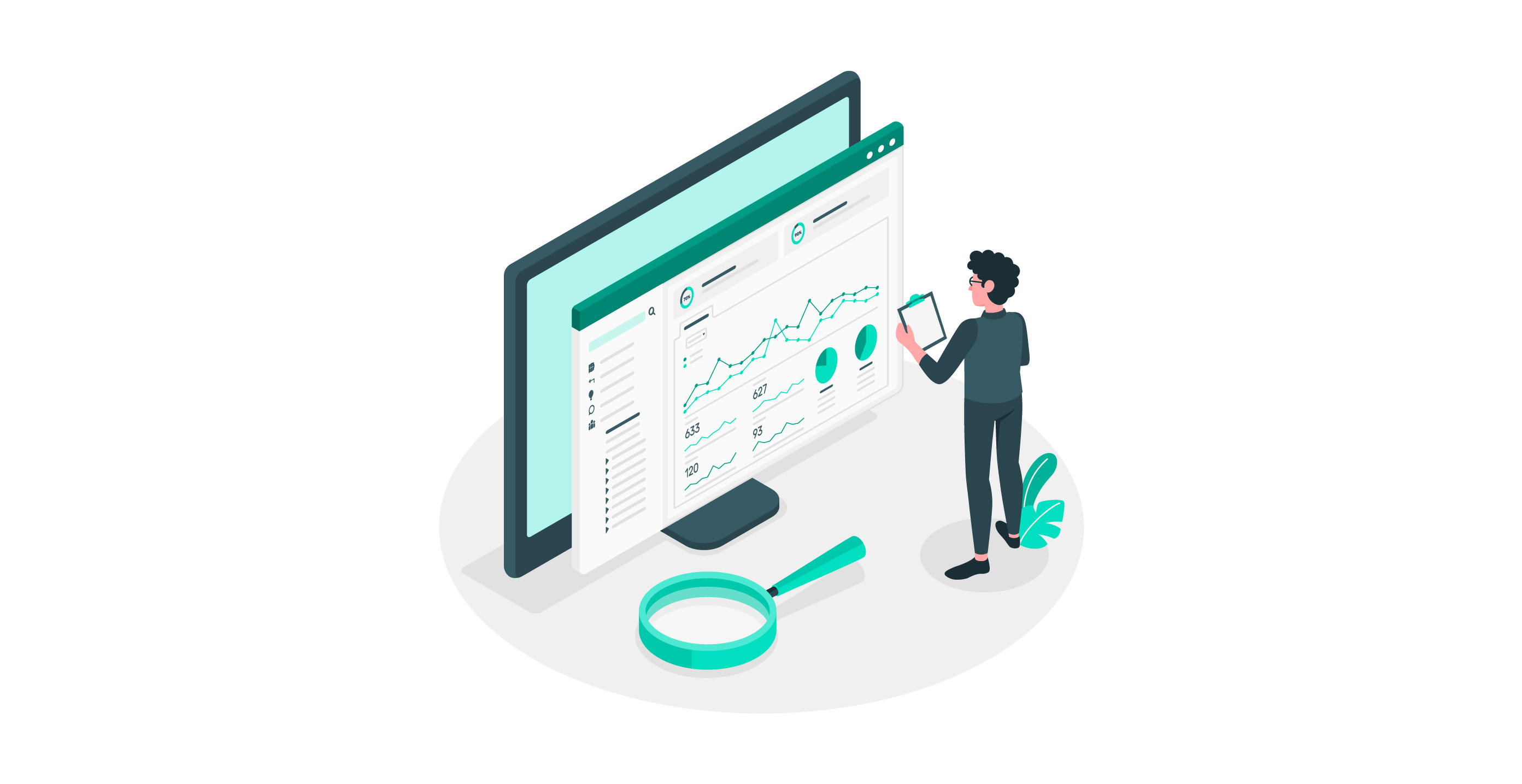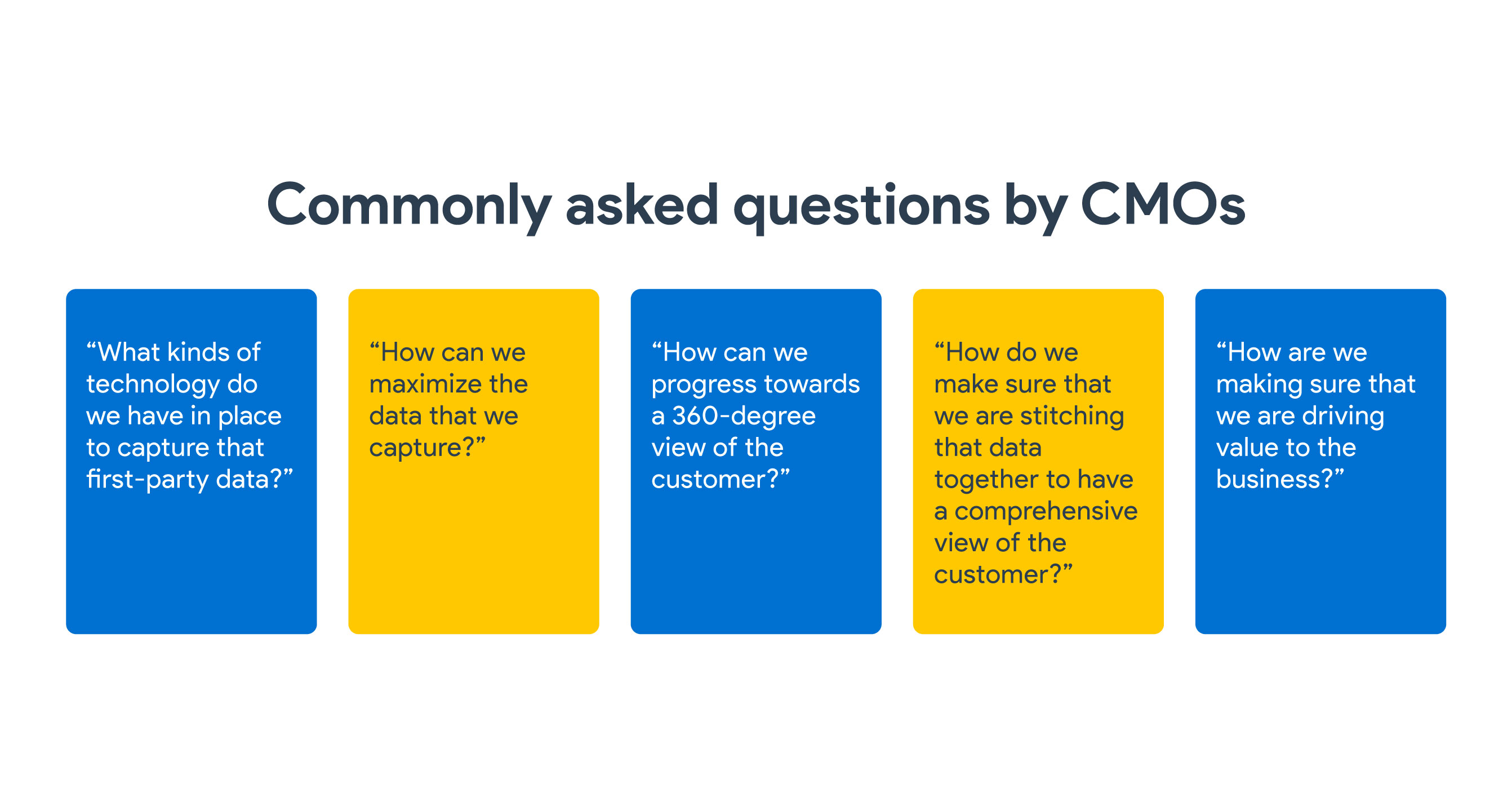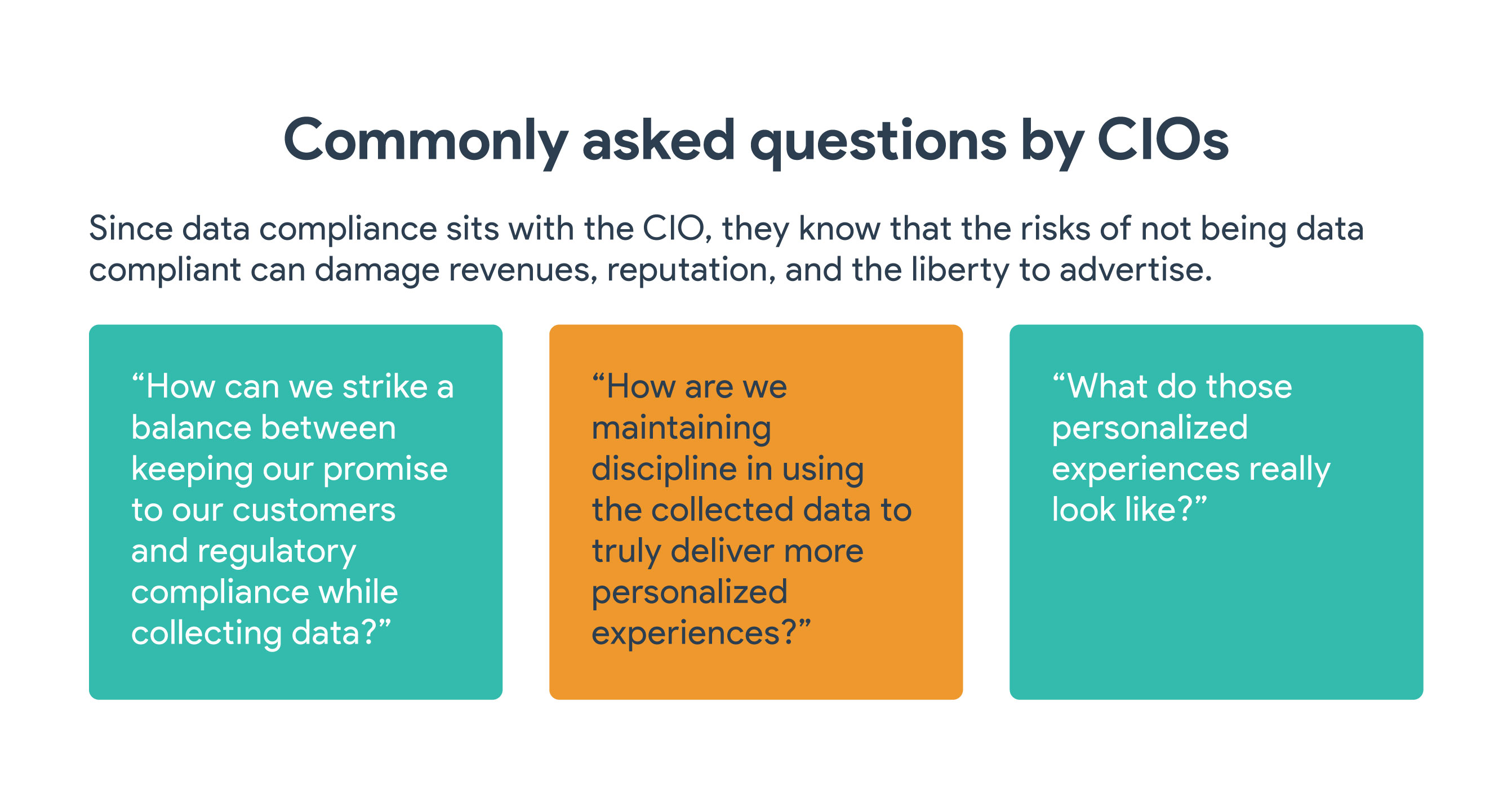Today Online Conversions tend to be the main focus for most digital marketers. But one cannot discount the value Offline Conversions bring to any digital marketing strategy. Offline Conversions occur when a customer takes action outside the digital world – such as visiting a physical store, making a phone call, etc.
This is crucial because it allows marketers to measure the effectiveness of their online campaigns. It helps them understand how their marketing efforts can translate into offline sales and customer behavior.
Offline Conversions can refer to the action of tracking and measuring the impact of online advertising on customer behavior that takes place outside of the digital environment. This means that offline conversions refer to any action or behavior that happens in the physical world, such as a customer placing a phone call or visiting a store and purchasing in-person after being exposed to an online advertisement.
Offline Conversion Tracking refers to the process of monitoring and measuring customer interactions and conversions that take place outside the digital environment, such as in physical stores or over the phone, which is known as offline conversion tracking.
Benefits of Offline Conversions Tracking

Offline conversion tracking is the secret weapon for every digital marketer! By identifying which online channels are driving the most offline conversions and the highest return on investment (ROI), businesses can allocate their marketing budget more effectively.
Tracking offline conversions also allows businesses to push back critical touchpoints in the customer journey to their ad platforms. This is particularly useful in service-based industries where there may be multiple touchpoints between contact, prospect, and sale. By using these touchpoints as conversion goals, businesses can obtain valuable insights to optimize their ad campaigns.
Moreover, in revenue models that are highly variable, capturing and optimizing for conversion value can help businesses focus on driving revenue rather than just sales. This is because client value and return on ad spend (ROAS) may vary depending on the market or campaign, and accurately capturing and optimizing for conversion value allows businesses to optimize their marketing efforts to generate maximum revenue.
Conversion tracking is when a brand monitors the actions consumers take toward the completion of a business goal. These actions can include signing up for a newsletter, downloading a content offer, or adding an item to a cart. Conversion tracking is a way to determine the effectiveness of an advertising campaign, design change, and other marketing components as consumers move toward conversion.
What Conversion Goals Should Be Tracked?
Conversion tracking tools like Google Analytics require account managers to define measurable goals for conversion. Goals are typically connected to specific pages, events, or other products and services.
Examples of Conversion Goals:
- Direct people to a physical store location
- Increase site visitors
- Contact a business via call or message
- Add item to cart
- Make a purchase
- Sign-up for a newsletter
- Download content offer
- Play a video
By tracking conversions, businesses determine their most valuable marketing channels via conversion attribution or giving a particular channel credit for a conversion. They have greater insight into how to allocate their marketing budget and resources based on their highest-performing channels for conversions, such as social media networks.
Tracking the Right KPIs
There are a variety of key performance indicators related to conversions themselves and other metrics that suggest the effectiveness of conversion efforts.
Examples of KPIs for conversion:
- Number of conversions
- Conversion rate
- Cost per conversion/acquisition
- Bounce rate
- Pages per visit
- Hits on destination page
- Events (played videos, download content)
- Session duration
KPIs like conversion rate evaluate conversions themselves while metrics like events take into account actions that will eventually lead to conversions.
How do I calculate Conversion rate?
To calculate Conversion rate, divide the total number of conversions by your desired metric (clicks, ad impressions, sessions on-site, etc).
Your KPIs will indicate how well or how close you are to meet your goal. For example, if your goal is to increase the number of purchases for an e-commerce site, one target KPI is the number of customers who land on a “Thank you page” after buying an item.
You can also track KPIs for consumers who are close to meeting a conversion goal and then take steps to ensure the completion of your goal. If a customer adds an item to a shopping cart but abandons the cart, you can use a re-targeting campaign via Google AdWords to display ads for the abandoned items and increase the chance of a conversion.

How Do I Set Up Conversion Tracking?
Analytics and advertising tools work together to collect, segment, and visualize data related to conversions. Where you market your content will determine the tools you will use for conversion analysis. If you choose to advertise or analyze data on Google’s advertising platforms, use tools found on Google Analytics and AdWords to track conversions.
Choose business goals
Select goals based on your market, target audience, mission, and other factors crucial for your business growth. An e-commerce site will usually focus on increasing purchases and revenue while a publisher will concentrate on conversions related to raising awareness and traffic.
Define a funnel
Connect your conversion goals to specific marketing channels and content so you track the progress toward the completion of the goal via a marketing/sales funnel. Note that it may take several interactions with your brand before a conversion occurs.
Enable conversion tracking
To collect and monitor data related to conversions, set up conversion tracking using your analytics tool of choice. If you use Google Analytics, insert a small snippet of code on each page you wish to track conversions.
Collect and analyze conversion data
Conversion tracking tools often optimize goal conversion tracking to collect data that is most relevant to business goals. For example, when a user plays a video as part of an event goal, Google only records one goal conversion even if the user plays the video two times during the same session.
Refine your marketing campaign
After analyzing conversion data, improve your marketing campaigns to optimize elements that influence conversions, such as content, page designs and more.
Maximizing your return on investment (ROI)
Conversion tracking can reveal whether you are seeing an adequate return on investment (ROI), also known as return on ad spend (ROAS), for advertising campaigns.
Allocating your budget
Your ROI and ROAS can inform your budget structure. For instance – you have two sub-projects running, a social media advertising campaign and an email marketing campaign. But your conversion tracking shows a higher ROI on your email campaigns. Here’s the point where you might want to allocate/ divert more money to your email marketing campaign.
Identifying opportunities for improvement
If you notice that certain campaign approaches aren’t converting as well as others, you can compare these campaigns with more successful ones to identify potential change areas. For example, if you see several campaigns that target one keyword converting more than campaigns that target another, you’ll know to focus on the higher-performing keyword.
Distinguishing clicks from conversions
Clicks and conversions aren’t always synonymous. In fact, sometimes, high click rates can obscure low conversion rates. With conversion tracking, you can determine the relationship between click rates and the achievement of your desired conversion.
Types of Conversion KPIs to track

Number of conversions
This metric tells you your total number of conversions. However, it does not compare the number of conversions to the number of people your campaign reached.
Conversion rate
This metric is the ratio of conversions to people reached. It is often applied to websites, where it determines the ratio of purchases to website visitors. Typically, multiple purchases by the same customer are not grouped as one purchase, so conversion rates can’t always tell you which of your customers makes the strongest impact.
Bounce rate
This metric divides the number of single-page website visits by the total number of website visits.
Session duration
This KPI details how much time the average visitor spends on your website during a visit.
Pages per visit
This KPI indicates how many of your webpages – product listings, FAQs and more – a visitor clicks on during a session. If you notice that someone has visited several product pages during their visit, you may be able to engage that person via ad retargeting.
Events
This is a broader KPI category. It can include clicks on social media links, video plays, content downloads, newsletter subscriptions, submissions of contact forms, and more. If these events occur with greater frequency, you can assume that your website is adequately converting visitors.
Cost per acquisition
This KPI determines the amount of money your company has spent per conversion. It tells you how much money, on average, you have spent to acquire a new customer. It is arguably the KPI most strongly correlated with ROI and ROAS.
How do you set up conversion tracking?

Often, setting up conversion tracking entails combining two or more advertising and analytics platforms that give you all the desired information. Perhaps the most commonly used conversion tracking tools are Google Analytics and Google Ads, which you can connect to your marketing efforts for thorough tracking of all desired metrics.
Company goals
Prioritize monitoring and provide metrics that pertain to your goals, whether that’s increasing sales, website visits or something else.
Conversion flow
Not all sales are made during the first interaction. A customer might visit your website, follow you on social media to learn what you’re all about and then see a post days later that compels them to make a purchase. Plot out several scenarios, and plan to collect metrics pertinent to these flows.
Next steps
How will you use your conversion data once you have it? If your goal is to drive sales on a certain product, boost your social media following, or make your website more user-friendly, know that ahead of time. With firm next steps in mind, you can best set up your conversion tracking system to help you achieve your goals.
Conversion tracking helps you understand how your customers engage with your business and take desirable actions, whether signing up for a newsletter or making a purchase.
- A Conversion is a customer action aligned with the goals of your marketing or advertising campaigns.
- Conversion tracking is the monitoring of conversions to assess the success of your campaigns.
- Tracking Conversions can maximize your ROI, inform your budget, identify improvement areas, and distinguish clicks from conversions.
For instance, you’ve recently wrapped up a marketing campaign that did not produce results. You take a different approach, but that fails. Instead of randomly trying another style, let conversion tracking show you where your strengths and weaknesses lie. With this, you can easily determine whether your advertising campaigns are leading to your desired goals.

Conversion tracking can be described as the monitoring of conversions or consumer actions that move your company closer to fulfilling a goal. For instance – actions can include a customer buying an item, adding to a cart, opening emails, clicking on links, landing pages, and more. The metrics indicate how well your company’s marketing efforts are achieving the desired outcome.
Conversion tracking works by putting numbers to your marketing campaigns’ results. Through conversion tracking, you’ll learn how many people in your audience are contacting your company, subscribing to your mailing list, or buying your products.
Conversion tracking is most commonly used in advertising and email marketing campaigns, though you can apply it to any campaign involving clickable links that direct your audience toward a desired end goal.
All three of these functions need to recognize that the value of direct engagements with the customers will increase. And that has implications from a marketing as well as technology perspective. Because ultimately, what advertisers need to think is, “how are we going to create those consumer connections?” Those valuable engagements happen across multiple touchpoints and the leadership team needs to think about how they can build the brand ecosystem around this reality.
Technology, information management, and marketing need to figure out effective ways to build direct relationships with their consumers. Creating a two-way value exchange in which the consumer gets something, and the brand gets their data, will be mutually rewarding. The bottom line is that these functions need to orchestrate how this new operating model works across the organization.
It is easier said than done but communication is key. Asking the right questions and collectively exploring solutions can work wonders and help navigate the toughest conversations. Business leaders are custodians of their respective brands and must put themselves in the customer’s shoes.
Here are some key questions that can serve as a crude checklist to set the foundation of a first-party data ecosystem.
The latter is a technological challenge which is where the technology function steps in, as it typically has visibility about the data a brand is already collecting from its customers


Key components for marketing and sales to capture first-party data
It starts with identifying gaps and opportunities in the consumer experience with online as well as offline transactions. The data can be channeled into walled gardens, maybe even using some AI technology for identification. Marketers need to create experiences that allow them to engage with those consumers. Don’t forget, meaningful interactions trump transactional interactions.
For example, if you are a car manufacturer, what kinds of experiences are you going to provide to your customers, before and after the purchase to create that relationship with them? You can help them choose the perfect product fit. Deliver after-sales services that are an extension of the brand experience. This way, you build a relationship where trust is the reward. Once you win consumer trust, you nurture that relationship over time.
5 Ways in which a CMO, CTO, and CIO can contribute to building an active First-Party Data Strategy

Collaborative Planning: The Chief Marketing Officer (CMO), Chief Technology Officer (CTO), and Chief Information Officer (CIO) should collaborate to develop a cohesive first-party data strategy. This should involve identifying the types of data that are most relevant to marketing campaigns, as well as the technology infrastructure needed to capture, store, and analyze the data.
Data Governance: The CIO can contribute to the first-party data strategy by developing data governance policies that ensure the accuracy, consistency, and security of the data. This includes defining data ownership, establishing data quality standards, and implementing appropriate data security measures.
Data Integration: The CTO can contribute to the first-party data strategy by ensuring that the technology infrastructure supports the integration of data from multiple sources. This may involve implementing data warehouses, data lakes, or other tools that can aggregate and analyze data from different systems and applications.
Analytics: The CMO can contribute to the first-party data strategy by leveraging analytics tools to gain insights into customer behavior and preferences. This includes identifying key metrics that measure the success of marketing campaigns, such as conversion rates, customer lifetime value, and customer retention rates.
Personalization: All three executives can contribute to the first-party data strategy by using data to personalize the customer experience. This includes creating targeted marketing campaigns, developing personalized product recommendations, and providing customized customer service. By leveraging first-party data, companies can create a more personalized and engaging customer experience, which can lead to increased customer loyalty and revenue growth.
In today’s digital era, with thousands of brands reaching consumers across a million touch-points with myriad communications, consumers find comfort in a long-lasting relationship with their preferred brand and block away the overwhelming persuasions of all others. Hence, emerges the need for building a consumer relationship lifecycle.
The emergence of the consumer relationship life cycle is a concept that has gained significant importance in recent years, particularly with the increasing use of first-party data. The consumer relationship life cycle refers to the various stages that a consumer goes through when interacting with a brand or company. These stages include awareness, consideration, purchase, retention, and advocacy. The emergence of this concept has been driven by the need for companies to better understand their customers and develop more personalized marketing strategies.

First-party data refers to the information that a company collects directly from its customers, such as their name, email address, purchase history, and other demographic information. This data is incredibly valuable as it provides companies with insights into their customers’ behaviors and preferences, allowing them to create more targeted and relevant marketing campaigns.
What does a Consumer Relationship Cycle look like?
The basic framework comprises five stages taking a consumer through the journey of awareness to advocacy. However, the brand dynamics at each location vary with the product category, consumer segment, and evolving expectations.
Awareness – It is crucial to capture your consumers’ share of mind by intriguing them with the right stimuli. A sharply defined communication strategy helps reach the right audiences at the right time and place in an Omni channel environment cutting through the competitive noises.
Acquisition – At this stage, you have successfully drawn consumers’ attention and interests, and they are actively gauging the possibility of solving their core pain points with your brand offering. This stage requires the utmost care from a brand to welcome a consumer with personalized attention to their needs warmly and concerns.
Conversion – This marks the ultimate step to new recruitment. You have successfully identified and interacted with your high-potential consumers with your offering at the right place and time in the most effective manner. The final nudge to purchase is to stimulate them with a personalized offer that matches their expectations. The consumer, delighted with the experience so far, decides to take the final action. But now, it’s quintessential to keep engaging with them to ensure repeat purchases to derive the highest return on your marketing investment.
Retention – The most sought-after and critical stage in the consumer relationship cycle. The entire endeavor of attracting new customers to make their first purchase is driven by the vision to nurture further purchases until they are loyal advocates. It is a fact that a strong retention strategy combats the cost of acquisition with five times more revenue owing to repeat purchases.
Advocacy – At this stage, the relationship between a brand and its consumers comes to an entire cycle with an unleashed opportunity to gain newer audiences with your existing ones and maximize the return on media investment with earned media exposure. This comes through consistent efforts from the brand to keep in touch with personalized messages, offers, and product benefits. With the data and technological advancements in marketing, we are introduced to various new ways to activate new users. However, the one factor that still does wonders is word-of-mouth. Brand buyers can act as micro-influencers and spread the digital word of delights given the right platform.

The emergence of the consumer relationship life cycle has been driven by the need for companies to better understand their customers and create more personalized marketing strategies. By leveraging first-party data, companies can gain insights into the various stages of the consumer relationship life cycle and develop targeted marketing campaigns that resonate with their customers.
As the importance of first-party data continues to grow, it is likely that the consumer relationship life cycle will become an even more critical concept for businesses looking to drive growth and build long-term customer relationships.
5 Ways in which First-Party Data can benefit the Consumer’s Lifecycle
First-party data → The building block of the Consumer relationship
Let’s look at how first-party data can drive decisions to build the sought-after relationship through the consumer’s journey from acquisition to retention.
First-party data is brand-owned data of their potential and existing consumers collected through one-on-one interactions on brand websites, e-commerce platforms, transactions at retail outlets, surveys, social media, and so on. It unlocks unique insights that are useful for brands to initiate and maintain a personalized relationship with each consumer.
- Personalized Communication: First-party data can be used to personalize communication with customers, improving the overall customer experience. By analyzing purchase history and other data points, companies can tailor their communication to the customer’s preferences, improving the likelihood of engagement and ultimately, the success of the communication.
- Improved Retention: First-party data can be used to improve customer retention by analyzing customer behavior patterns and preferences. With this information, companies can offer personalized incentives and promotions that will resonate with individual customers, driving repeat purchases and ultimately improving customer retention rates.
- Enhanced Customer Service: First-party data can be used to enhance customer service by providing customer service representatives with a detailed understanding of each customer’s history with the company. This allows the representative to better address any concerns or issues the customer may have, leading to improved customer satisfaction and loyalty.
- Targeted Marketing: First-party data allows companies to better understand their customers’ needs and preferences, enabling them to create more targeted marketing campaigns. By creating targeted campaigns, companies can reach the right customers with the right message at the right time, ultimately improving the chances of conversion.
- Increased Customer Lifetime Value: By leveraging first-party data to better understand customers, companies can identify opportunities to increase customer lifetime value. For example, by analyzing purchase history, companies can identify customers who are most likely to make additional purchases or become brand advocates, and target them with personalized marketing campaigns and loyalty programs to increase their lifetime value.
Digital Marketing Maturity is a measure of how well a company has embraced digital marketing as a strategy for achieving its business objectives. It takes into account various aspects such as the company’s digital capabilities, organizational structure, processes, and culture.
For CMOs and their digital marketing organizations, the changes of the past few years have come fast, and their full impact has yet to be felt. Two big shifts stand out. The pandemic compressed several years of digital market evolution into a few months as consumers raced online to do everything from purchasing daily necessities to seeking medical treatment. At the same time, the data stream provided by third-party cookies—one of the critical supports of precision digital marketing—began to dwindle as the industry and regulators reacted to growing concerns about privacy. Meanwhile, consumers’ expectations for more customized, even personalized, outreach and interaction continued to grow.
Many companies have responded to these sea changes with speed and agility. Others have been slower to react. The big difference is the extent to which each company has advanced its digital marketing maturity.
ON24 – a leading digital engagement platform that drives pipeline and revenue growth, released the results of their latest survey, “The State of Digital Maturity in Europe: The Tools, Techniques, and Strategies Marketers Need to Drive Results.” Based on responses from over 800 marketing leaders across 12 countries in Europe, this survey examines digital maturity across marketing organizations and finds that the top-performing businesses are backed by a digitally mature marketing team.

Digital maturity differs somewhat across Europe. Despite European countries sharing much in common, many areas differ — from language and culture to business behaviors and law. Digital maturity is another area where differences are present. The survey reveals some differences in digital maturity levels between different regions in Europe. Southern Europe (Italy, Portugal and Spain) has both the highest level of respondents with an advanced maturity score and those who are novices.
The Benelux (Belgium and the Netherlands) region had no respondents who scored in the advanced range. These differences highlight the fact that there is no one-size-fits-all approach to improving digital maturity. B2B marketers in every country will need to assess their own organization individually to determine which actions are necessary for performance.
Digital maturity & its co-relation with Business Success
Analysis of the data demonstrates that there is a strong link between digital maturity and business success. Of those respondents who exceeded their business goals by a significant margin, more than half (52%) also had the highest maturity level — compared to just 15% of novices. This suggests that B2B marketers who improve their level of digital marketing maturity can expect to see higher levels of performance.

The majority of European B2B marketers surveyed are adopting good practices with their marketing strategy. Close to nine in 10 (87%) have a strategy that is aligned with both marketing and sales goals, while one in five use engagement and performance data to revise their strategy throughout the year. A similar percentage (85%) also claims that goals are ‘always’ set for tactics or digital experiences.
Similarly, results in the area of data and measurement are good. About two-thirds claim to centralize and standardize data from all systems and have a single customer view. Added to that, nearly seven in 10 claims that they either have “good” or “excellent” visibility into marketing’s contribution to the pipeline.
Data and measurement
In any area of business, data is an essential component for measuring performance against the department and organizational goals. But for B2B marketers, data has another essential function in today’s digital buying environment. Data can be used to understand buyers and to determine the experience they should receive.
Approach to collecting marketing data
The importance of data is not lost on today’s B2B marketers. An overwhelming majority of survey respondents “strongly agree” (64%) or “somewhat agree” (31%) that businesses which have high-quality data achieve better results. And, for the most part, respondents are doing well in the area of data and measurement. Two-thirds (65%) centralise and standardise data from all their systems and have a single customer view. Only a scant few (2%) report that they don’t collect data or do so incidentally. Eight in 10 (81%) respondents are collecting engagement and action data from multiple touchpoints in order to understand their buyers. This is in line with global data from Salesforce that shows that in 2021 B2B marketers used an average of nine data sources to drive engagement, with this number expected to increase in 2022.
Marketers are putting data to good use. The majority (85%) say that data is used to inform content and overall themes. The largest share of those respondents says they also use data to inform how they drive interactivity and conversions (42%), while 23% say they use data to do all the above and to help improve their strategy.
All organisations have at least some difficulties with data. It’s natural for marketing data to decay over time, for buyers to add incorrect data, or for values to differ in different place. It is far better to be honest and cautious with your data, rather than making claims that are found not to be valid. Presenting wrong data without caveats can damage your credibility across the business, as well as leading to you overestimating the potential impact of your efforts. Remember, it’s far better to under promise and over deliver as opposed to the other way around.
First-party data sources can generate 1.5 times the incremental revenue from a single ad placement, communication, or outreach, and double the improvement in cost efficiency over companies that have more limited data integration capabilities.

First-Party Data and its relation with Digital Marketing Maturity
The relationship between Digital Marketing Maturity and First-Party Data is crucial as a more mature digital marketing strategy will be better equipped to leverage first-party data effectively. For instance, a mature digital marketing strategy will have the necessary tools and processes in place to collect, organize, and analyze first-party data, allowing for more targeted and personalized campaigns.

Additionally, a mature digital marketing strategy will be able to leverage first-party data across various channels, including email, social media, and website, to create a seamless customer experience. By leveraging first-party data effectively, a mature digital marketing strategy can increase customer engagement, loyalty, and ultimately drive revenue growth.

In conclusion, Digital Marketing Maturity and First-Party Data are closely intertwined, with a more mature digital marketing strategy being better equipped to leverage first-party data effectively. By focusing on both aspects, companies can create more effective and targeted marketing campaigns, resulting in increased customer engagement and revenue growth.
Datahash is proud to announce that we are now ISO 27001:2013 Certified and SOC 2 Type 2 Compliant. The industry-acknowledged certification and report attest to our commitment to safeguarding customer data while prioritizing data protection and security.
The ISO/IEC 27001:2013 Certification specifies the requirements for establishing, implementing, and continually improving an information security management system within the context of the organization. It demonstrates that Datahash has invested in the people, processes, and technology (e.g., tools and systems) to protect the organization’s data and provides an independent, expert assessment of whether your data is sufficiently protected.
SOC 2 Type 2 Report is an audit that validates whether Datahash’s security practices and controls meet the American Institute of Certified Public Accountants (AICPA) Trust Service Principles and Criteria for System and Organization Control. It specifies how organizations should manage customer data based on the Trust Services Criteria (TSC) of Security, Availability, and Confidentiality.
With cloud-hosted applications proliferating, compliance is fast-growing as a must-have security benchmark for attribution firms. The report is a compliance protocol that assesses whether your organization manages its customers’ data safely and effectively within the cloud. Technology service providers or SaaS companies that manage customer data in the cloud should require to adopt strict compliance practices and therefore consider the SOC 2 Type 2 compliance checklist.
Akshat Jhanwar, Chief Technology Officer, Datahash, says: “At Datahash, we place great emphasis on maintaining the highest standards of security and privacy in all our operations. Our commitment to these values is reflected in our attainment of SOC2 and ISO 27001 certifications, which serve as a testament to our dedication to ensuring that our customers’ data is processed in a secure and compliant manner. By adhering to these rigorous industry standards, we strive to solidify the trust of our valued customers and provide them with the assurance that their data is in safe hands.”
Being an early-stage start-up has its challenges, but the team at Datahash made a continual effort to identify and treat risks related to information security. Customer trust is the cornerstone of our work ethic, and we couldn’t have asked for better progress.
Behavioural data reveals the specific ways in which your customer interacts with your business, it could include purchase history and social interactions. This data proves to be extremely valuable to organizations that are looking to create a deep and more targeted experience for customers.
Access to this kind of data helps marketers and advertisers identify patterns and trends in customer behaviour, and this can be then used to create targeted marketing campaigns and improve overall product offerings. This information can be tracked, collected, and organized into your customer profiles.
To list a few examples:
Purchase history data describes the products and the services that your customers have purchased in the past – this includes the frequency, quantity, the value of the purchases. Website and app usage data describes how customers interact with your website and mobile app. This again includes how long they stay on a page, the actions taken, and so on and so forth.
Social media engagement data describes how customers engage with social media channels – inclusive of comments, likes, and shares. Marketing campaign data tells how your customers interact with email marketing campaigns – inclusive of open rates, click-through rates, and conversions.
Ways in which you can use Behavioral Data

There are numerous opportunities when it comes to insights gained through behavioral data.
Re-targeting: Behavioral data can be used to retarget customers who have interacted with your website or products but have not completed a purchase. This enables you to re-engage customers and increase the likelihood of a conversion.
A/B testing: A/B testing can be conducted with the use of this data, where two versions of a product or website are tested to determine which is more effective in driving customer engagement and conversions.
Personalized marketing campaigns: Create targeted marketing campaigns that are tailored to individual customer preferences and behavior.
Enhanced customer experiences: Improve customer experiences by identifying areas of friction or frustration in the customer journey. For example, website usage data can lead to the optimization of the user interface or to streamline the checkout process.
Increased customer retention: Behavioral data can be used to identify customers who are at risk of churning and to develop targeted retention strategies. For example, purchase history data can be used to identify customers who have not made a purchase in a while, and you can then offer them targeted promotions or incentives to encourage them to return.
Predictive analytics: Use this data type to build predictive models to forecast customer behavior and preferences. This enables better anticipation of customer needs and tailoring your products and services accordingly.
Improve product development: Behavioral data can provide valuable insights into how customers use your company’s products or services, including which features or functions are most popular and which are underutilized. This data can be used to inform product development and to identify opportunities for innovation.
First-party data is highly valuable information for retailers because it comes directly from the customer, making it more reliable than a third-party source. First-party data can help marketers create personalized experiences by displaying adverts relevant to customers’ needs. Zero-party data is also valuable for marketers as it is willingly provided by consumers and can be used to help improve the shopping experience.
The main advantage of a first-party data strategy is building trust with customers. The strategy should consider all possible points of contact and types of customer data that can be collected.
A strong strategy can deliver accurate insights that enable marketers to be more innovative in the ways that they connect with customers. This can improve the user experience and can be useful in creating an overall positive customer journey.
Descriptive data refers to the data that describes or summarizes the characteristics and behavior of a group of customers. This data can be used to gain insight into preferences, habits, and the needs of a company’s customer base, and can help inform marketing and business strategies.
This data can take many forms, including demographic information such as age, gender, income level, and education. This is a good method for your organization to collect and organize descriptive data. This will also help you incorporate specific information about a customer, including the type of house they live in, the lifestyle they lead, and more.
Descriptive data can also be used to identify trends and patterns in customer behavior, such as changes in purchase frequency or shifts in product preferences over time. This information can be used to develop targeted marketing campaigns and improve customer experiences.
Ways in which Descriptive data can be used:

Understand customer behavior: Companies can use descriptive data to gain insights into customer behavior, such as purchasing habits, preferences, and demographics. This information can be used to develop more targeted marketing campaigns, tailor product offerings, and improve customer experiences.
Evaluate performance: Companies can use descriptive data to track key performance indicators (KPIs) such as sales, revenue, and customer satisfaction. This information can be used to identify areas where performance is lagging and take corrective action.
Identify trends: Companies can use descriptive data to identify trends in customer behavior, market conditions, and other factors that may impact their business. This can help them to anticipate changes and adjust their strategy accordingly.
Benchmarking: Companies can use descriptive data to compare their performance against industry benchmarks or competitors. This can help them to identify areas where they are lagging behind and develop strategies to catch up.